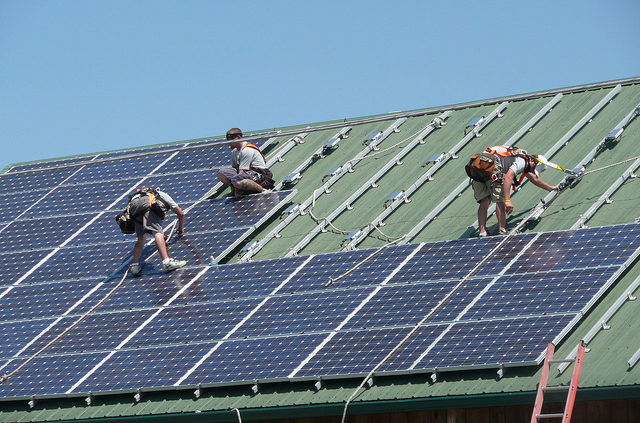The cost of solar panels varies widely depending on the type of system you choose, your property location and your energy needs. You should also consider tax credits, as they can reduce your overall costs significantly.
Typically, it takes between five and 15 years for the savings from solar to more than cover your initial investment. However, you can save more than that, as many city and utility providers have incentives to encourage homeowners to go solar.
Cost of Panels
The cost of solar panels depends on a few factors, including the size of your system, your home’s location, and market conditions. Generally, the larger your system is, the less it will cost per watt. You’ll also have to factor in how much electricity you use and your state’s electric costs. This information will help your contractor estimate how many panels you need to cover your energy usage. Generally, you’ll pay between $6 and $8 a watt for your solar installation, which includes the panels, parts, labor costs, permits, and overhead. The bigger your system is, the more you’ll save in the long run because it will be able to generate more kilowatts of electricity than smaller systems. When considering your solar system, check with your local utility company about any incentives and rebates that may be available. These programs can help lower your system’s upfront cost and reduce your energy bills for years.
Cost of Installation
Installing solar panels can be a great way to reduce your energy bills and cut back on your carbon footprint. However, the cost of installing solar panels can vary widely depending on several factors. One of the biggest factors influencing the cost of your solar panel installation is the type of solar system you have installed. There are three types of residential solar systems — crystalline, thin-film and monocrystalline — and your chosen type will affect how much your system will cost. Thin-film solar panels are the most popular option but are also the least efficient and require more panels than crystalline options. They can be mounted on glass or metal in various shapes and angles. Crystalline panels are made from whole silicon crystals and are the most powerful. They are expensive but last 25 to 35 years and have a longer warranty than thin-film options. The price of a solar system also depends on the number of panels you need to cover your electricity needs. For example, a 4kW system will run around $15,000 to $25,000 before tax credits or rebates are applied.
Additional costs are permits, inspection fees, labor, and equipment. Some states have local incentives to make the cost of installation less.
Cost of Batteries
Batteries are an optional solar system component that can help you save money on your energy bills and provide backup power during a power outage. They also increase your energy independence and can help you store excess power from the sun so that you can use it later. Battery prices have dropped 85% in the last decade, making them more affordable than ever. Most batteries have a warranty guaranteeing capacity and performance for ten years or 5,000 charge cycles. The cost of adding a battery to your solar system will depend on the type of battery you choose and the size you need. The most common batteries are lithium-ion.
You can also choose a battery with a lower environmental impact, such as a lead-acid or an all-green battery. Most homeowners will opt for a lithium-ion battery, which offers superior energy storage.
Cost of Inverter
Inverters convert DC (direct current) power into AC (alternating current) power for your home’s electricity needs. They’re also an important part of a solar system because they connect to the grid and allow you to store energy for later use. Inverter costs vary depending on the brand, how many panels you need, and how they’re wired together. They’re an expensive component of your solar system but essential to making it work. One way to save money on your inverter is by installing it yourself. This can help you reduce or eliminate labor costs and corporate expenses, which can add up fast. Another way to cut costs is by choosing a higher-efficiency panel. These are more costly, but they’re better for your budget in the long run because they produce much power with less space. Similarly, the quality of a solar panel’s manufacturer and its warranty will impact the cost. Some brands have a reputation for quality and a good track record for providing service. The size of your home can also influence the cost of your solar system. Smaller houses with high energy demands can require more panels to produce the same power as larger homes. It’s a good idea to take the time to gather all of the information you need about your home and energy needs before deciding how much you want to pay to install solar. This will give you a more accurate sense of the cost of your system and how much energy it will produce over time.
Read also : newsobtain









